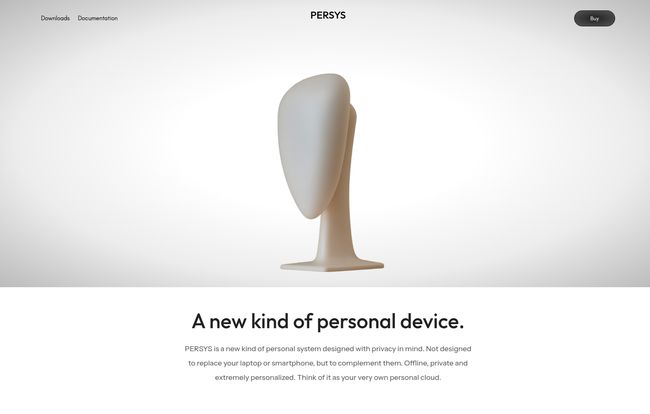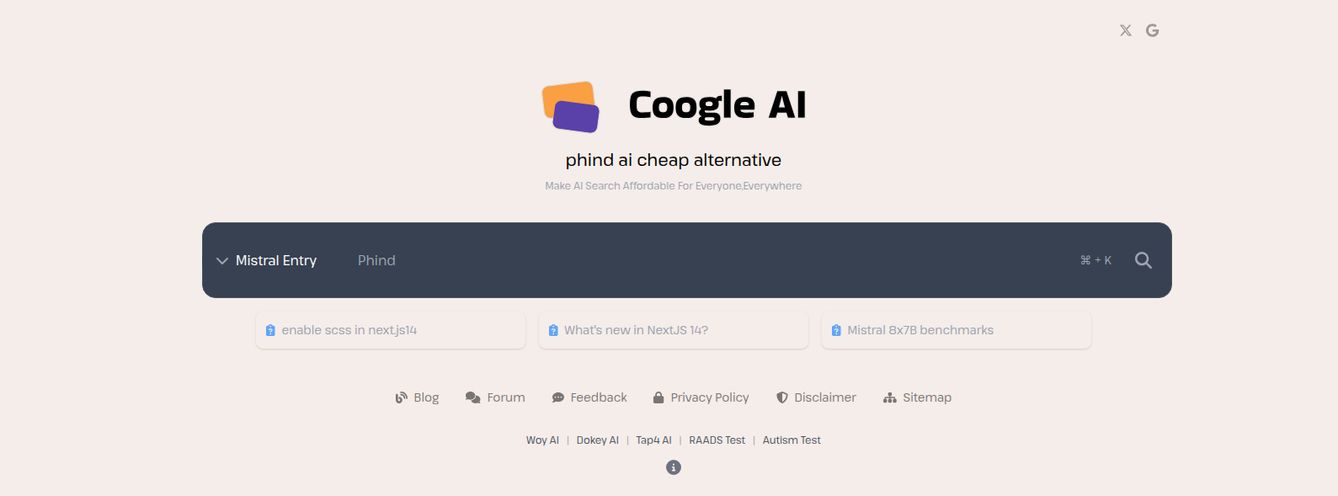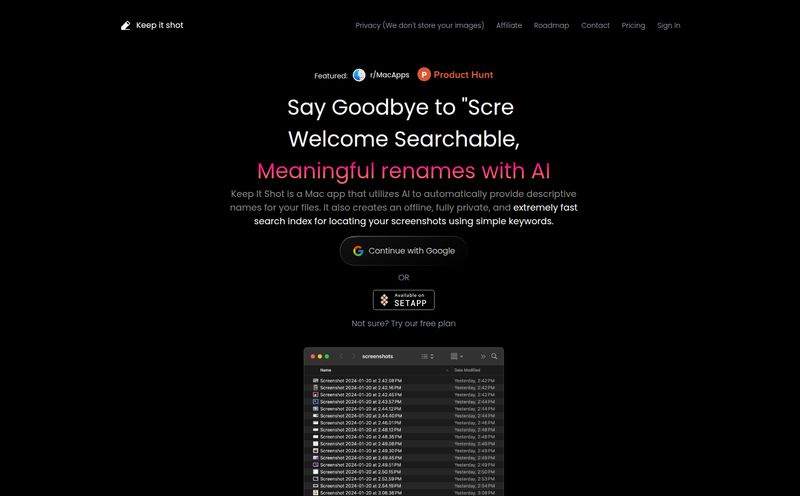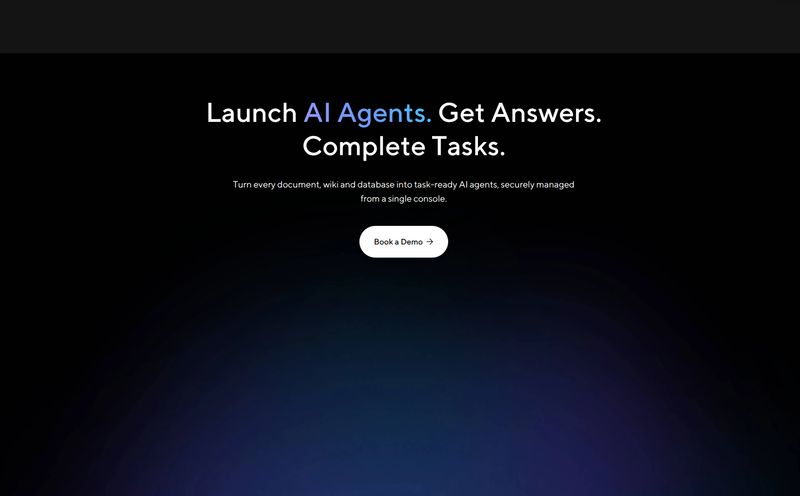I saw an ad the other day for something so ridiculously specific—a particular brand of Japanese gardening shears I’d only mentioned in a voice note to a friend—that I had to just laugh. It wasn't even surprising anymore. It’s just the world we live in. Our data, our conversations, our photos… they’re not really ours, are they? They're fuel for the giant, data-hungry engines of Big Tech.
We’ve been talking about this for years in the SEO and tech world. The trade-off has always been convenience for privacy. You want a smart assistant? It needs to listen. You want cloud storage? You have to upload your life to a server you’ll never see. But what if that trade-off is becoming a false choice?
Every so often, a piece of tech pops up that makes you sit up and take notice. Something that feels… different. That's the feeling I got when I first stumbled upon PERSYS. It's not just another gadget; it's a statement. It’s a beautifully designed, head-shaped device that promises to be your own personal, private, and offline AI system. My curiosity was definitely piqued.
So, What Exactly is PERSYS? (And Why Should You Care?)
Let's cut through the marketing jargon. Think of PERSYS as your own private mini-cloud server that lives in your home, complete with its own AI brain. It’s a physical device designed to store your files, photos, and documents securely, but the magic is that it runs all its AI tricks—like chatting with you about your documents or searching through your media—right there on the device itself.

Visit PERSYS
Nothing gets sent to Google, Amazon, or OpenAI. Your personal data never leaves the box. It can create its own Wi-Fi hotspot for you to connect to directly, or it can just sit on your home network like any other device. The point is, you are in complete control. It's the anti-cloud, in a way. And honestly, it’s about time.
The Core Features That Actually Matter
A spec sheet is one thing, but what does this thing actually do for you? I’ve seen a lot of devices promise the world, so let’s look at the features that I think make PERSYS stand out from the crowd.
On-Device AI and True Offline Functionality
This is the big one. The main event. PERSYS uses what's called on-device AI inference. Fancy term, simple meaning: the AI thinking happens locally. When you ask it a question or tell it to find a photo of your dog at the beach, it processes that request using its own hardware, not some remote server.
This is a fundamental shift. It’s the difference between having a private conversation in your living room and shouting it in the middle of Times Square. Features like "Private Chat" and "Deep Search" become genuinely private. You can feed it your personal documents to create a custom knowledge base nobody else has access to. For a journalist, researcher, or just a deeply private person, this is a game-changer.
Your Own Personal Digital Fortress
With options for 1TB or 2TB of storage, PERSYS isn't just an AI toy; it’s a serious storage solution. That’s enough space for hundreds of thousands of photos or countless documents. But it's more than just a hard drive. The company claims it has "tamper-proof physical security," and it runs on a real file system. It’s designed from the ground up to be a vault for your digital life.
In my experience, the peace of mind that comes from knowing where your data physically is cannot be overstated. It's not on a server in Virginia or Finland, susceptible to a massive data breach you’ll only hear about six months later. It’s on that cool-looking sculpture on your desk.
Open-Source and Built for Trust
Here’s something for the tech heads and skeptics (my people!). The code base for PERSYS is open-source. This is a massive green flag. It means anyone with the skills can inspect the code to see exactly what it's doing. There are no hidden backdoors or sneaky data-sharing routines. In an industry plagued by a lack of transparency, this is an incredibly refreshing approach. It shows confidence in their product and a genuine respect for the user. It’s a move that fosters community and trust, not just customers.
My Honest Take: The Good, The Bad, and The Unavailable
Alright, no product is perfect. As an SEO professional who's seen a million product launches, I've learned to be healthily skeptical. So, let’s get real about PERSYS.
The good stuff is obvious. The privacy-first approach is fantastic. The one-time payment model feels like a breath of fresh air in a world choking on endless subscriptions. That tagline,
Pay once, own it (and your data) forever,
is music to my ears. It's a philosophy, not just a pricing strategy. The promised ease-of-setup is also a huge plus for those who want privacy without needing a computer science degree.
Now for the reality check. The biggest problem? It’s sold out. Of course, it is. The coolest new tech is always impossible to get your hands on, right? This creates a ton of hype but is also just plain frustrating for anyone who wants one now. Secondly, the mobile app is still listed as "coming soon." In 2024, a desktop-only experience is a significant limitation. We live on our phones. This will absolutely be a dealbreaker for some until that app materializes. So, for now, it's a powerful tool, but one that tethers you to your computer.
Let's Talk Money: The PERSYS Pricing Model
So, how much does owning your own data cost? The price tag is straightforward, which I appreciate.
| Product | Price | Payment Model |
|---|---|---|
| PERSYS | $300.00 USD | Pay once, own it forever. |
At $300, it's an investment, for sure. It's not a cheap impulse buy. But let's put it in perspective. A 2TB Google One plan costs $99.99 a year. In three years, you’ve paid the same amount for a service where you are fundamentally the product. With PERSYS, you make a one-time purchase and you're done. For the right person, the value proposition is crystal clear.
Who is PERSYS Actually For?
Is this device for your grandma who just wants to video chat with the grandkids? Probably not. PERSYS is for a specific, and I believe growing, type of user. It’s for the developer who wants to experiment with local AI. It’s for the journalist protecting their sources. It’s for the artist or creator who wants to keep their portfolio private until it's ready for the world.
More broadly, it's for anyone who has felt that little pang of unease about how much of their life is stored on corporate servers. It’s for teh person who is actively trying to de-Google their life and is looking for viable alternatives. It’s a tool for digital sovereignty.
A Glimpse of a More Private Future
Look, PERSYS isn't going to dismantle the surveillance economy overnight. It's one product in a sea of data-hungry services. But it’s a powerful and elegant proof of concept. It shows that there is a different way forward—a path where we can enjoy the benefits of AI and intelligent computing without auctioning off our privacy.
While its current unavailability is a bummer, PERSYS represents a trend I am incredibly excited about. It's a move back towards ownership, control, and digital dignity. And I, for one, will be keeping a very close eye on it. I might even manage to get one before they sell out next time.
Frequently Asked Questions About PERSYS
- Is PERSYS difficult to set up?
- According to the company, no. It’s designed for an easy, user-friendly setup process so you don't need to be a tech expert to get it running.
- Can I access my PERSYS files from my smartphone?
- Not at the moment. The experience is currently desktop-only. However, a mobile app is on their roadmap and listed as "coming soon."
- Is the $300 a one-time fee or a subscription?
- It's a one-time purchase. You buy the device, and it's yours forever, along with all your data. There are no recurring subscription fees for the core service.
- What happens if my internet connection goes down?
- One of its key features is offline accessibility. PERSYS can create its own onboard Wi-Fi hotspot, allowing you to connect and access your files and the on-device AI even without an active internet connection.
- Why is it important that PERSYS is open-source?
- Making the software open-source allows for complete transparency. It means independent experts can examine the code to verify that it's secure and not sending your data anywhere without your permission. It's a major factor in building trust with privacy-conscious users.
Reference and Sources
- Official PERSYS Product Page
- The Verge: Welcome to the new age of AI gadgets - An article discussing the broader trend of new AI hardware.



